
Born
April 14th, 1891
Passed Away
December 06th, 1956
Popularly Known as
Baba Saheb
Occupation
Freedom fighter
Spouse
Ramabai Ambedkar
Religion
Hindu
Caste
Mahar
Native
Mhow
Country
India
પિતા જ ધર્મ છે, પિતા જ સ્વર્ગ છે, પિતા જ પરમ તપ છે, પિતૃભક્તિ સર્વે ભક્તિમાં શ્રેષ્ઠ છે. પિતૃભક્તિ સર્વે દેવતાઓને પણ પ્રિય છે. શાસ્ત્ર માં કહેવાયેલા આ વાક્યો નો અર્થ અમારા જીવનનો મર્મ છે. સ્વર્ગની પ્રાપ્તિ ધર્મથી થાય છે, તપથી થાય છે. પરંતુ અમારા માટે અમારી પિતૃભક્તિ જ સર્વે ભક્તિમાં શ્રેષ્ઠ છે.
Shradhanjali By
Shradhanjali .com
Biography of Bhimrao Ramji Ambedkar
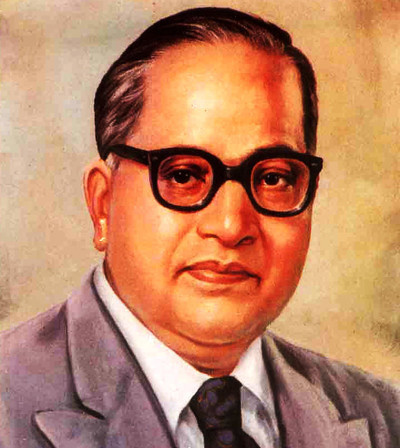
Bhimrao Ramji Ambedkar, also known as Babasaheb, was an Indian jurist, political leader, Buddhist activist, philosopher, thinker, anthropologist, historian, orator, prolific writer, economist, scholar, editor, revolutionary and a revivalist for Buddhism in India. He was also the chief architect of the Indian Constitution. Born into a poor Mahar (then considered an Untouchable caste) family, Ambedkar spent his whole life fighting against social discrimination, the system of Chaturvarna — the categorization of Hindu society into four varnas — and the Hindu caste system. He is also credited with providing a spark for the conversion of hundreds of thousands of untouchables to Theravada Buddhism. Dr. Ambedkar was posthumously awarded the Bharat Ratna, India's highest civilian award, in 1990.
Overcoming numerous social and financial obstacles, Ambedkar became one of the first so called "Outcasts" to obtain a college education in India. Eventually earning law degrees and multiple doctorates for his study and research in law, economics and political science from Columbia University and the London School of Economics, Ambedkar gained a reputation as a scholar and practiced law for a few years, later campaigning by publishing journals advocating political rights and social freedom for India's so-called untouchables. He is regarded as a Bodhisattva by some Indian Buddhists, though he never claimed himself to be a Bodhisattva.
Bhimrao Ramji Ambedkar was born in the British-founded town and military cantonment of Mhow in the Central Provinces (now in Madhya Pradesh). He was the 14th and last child of Ramji Maloji Sakpal and Bhimabai. His family was of Marathi background from the town of Ambavade in the Ratnagiri district of modern-day Maharashtra. They belonged to the Hindu, Mahar caste, who were treated as untouchables and subjected to intense socio-economic discrimination. Ambedkar's ancestors had for long been in the employment of the army of the British East India Company, and his father Ramji Sakpal served in the Indian Army at the Mhow cantonment. He had received a degree of formal education in Marathi and English, and encouraged his children to learn and work hard at school.
Belonging to the Kabir Panth, Ramji Sakpal encouraged his children to read the Hindu classics. He used his position in the army to lobby for his children to study at the government school, as they faced resistance owing to their caste. Although able to attend school, Ambedkar and other untouchable children were segregated and given no attention or assistance by the teachers. They were not allowed to sit inside the class. Even if they needed to drink water somebody from a higher caste would have to pour that water from a height as they were not allowed to touch either the water or the vessel that contained it. This task was usually performed for the young Ambedkar by the school peon, and if the peon was not available then he had to go without water, Ambedkar states this situation as "No peon, No Water". Ramji Sakpal retired in 1894 and the family moved to Satara two years later. Shortly after their move, Ambedkar's mother died. The children were cared for by their paternal aunt, and lived in difficult circumstances. Only three sons — Balaram, Anandrao and Bhimrao — and two daughters — Manjula and Tulasa — of the Ambedkars would go on to survive them. Of his brothers and sisters, only Ambedkar succeeded in passing his examinations and graduating to a higher school. Bhimrao Sakpal Ambavadekar the surname comes from his native village 'Ambavade' in Ratnagiri District His Bhramin teacher Mahadev Ambedkar who was so much fond of him, has changed his surname from 'Ambavadekar' to his own surname 'Ambedkar' in school records.
- Higher Education
Ramji Sakpal remarried in 1898, and the family moved to Mumbai (then Bombay), where Ambedkar became the first untouchable student at the Government High School near Elphinstone Road. Although excelling in his studies, Ambedkar was increasingly disturbed by the segregation and discrimination that he faced. In 1907, he passed his matriculation examination and entered the University of Bombay, becoming one of the first persons of untouchable origin to enter a college in India. This success provoked celebrations in his community, and after a public ceremony he was presented with a biography of the Buddha by his teacher Krishnaji Arjun Keluskar also known as Dada Keluskar, a Maratha caste scholar. Ambedkar's marriage had been arranged the previous year as per Hindu custom, to Ramabai, a nine-year old girl from Dapoli. In 1908, he entered Elphinstone College and obtained a scholarship of twenty five rupees a month from the Gayakwad ruler of Baroda, Sahyaji Rao III. By 1912, he obtained his degree in economics and political science from Bombay University, and prepared to take up employment with the Baroda state government. His wife gave birth to his first son, Yashwant, in the same year. Ambedkar had just moved his young family and started work, when he dashed back to Mumbai to see his ailing father, who died on February 2, 1913.
In 1913 he received Baroda State Scholarship of 11.50 British pounds a month for three years to join the Political Department of the Columbia University as a Post Graduate Student. In New York he stayed at Livingston Hall with his friend Naval Bhathena, a Parsi; the two remained friends for life. He used to sit for hours studying in Low Library. He passed his M.A. exam in June 1913, majoring in Economics, with Sociology, History, Philosophy, and Anthropology as other subjects of study; he presented a Thesis,"Ancient Indian Commerce". In 1916 he offered another M.A. thesis, "National Dividend of India-A Historic and Analytical Study". On May 9, he read his paper Castes in India: Their Mechanism, Genesis and Development" before a seminar conducted by the anthropologist prof. Alexander Goldenweiser. In October 1916 he was admitted to Gray's Inn for Law, and to the London School of Economics and Political Science for Economics where he started work on a Doctoral thesis. In 1917 June he was obliged to go back to India as the term of his scholarship from Baroda ended, however he was given permission to return and submit his thesis within four years. He sent his precious and much-loved collection of books back on a steamer, but it was torpedoed and sunk by a German submarine.
As a leading Indian scholar, Ambedkar had been invited to testify before the Southborough Committee, which was preparing the Government of India Act 1919. At this hearing, Ambedkar argued for creating separate electorates and reservations for untouchables and other religious communities. In 1920, he began the publication of the weekly Mooknayak (Leader of the Silent) in Mumbai with the help of Shahu I (1884–1922), Maharaja of Kolhapur. Ambedkar used this journal to criticize orthodox Hindu politicians and a perceived reluctance of the Indian political community to fight caste discrimination. His speech at a Depressed Classes Conference in Kolhapur impressed the local state ruler Shahu IV, who described Ambedkar as the future national leader and shocked orthodox society by dining with Ambekdar. Having resigned from his teaching position, in July he returned to London, relying on his own savings, supplemented by loans from the Maharaja of Kolhapur and his friend Naval Bhathena. He returned to the London School of Economics, and to Gray's Inn to read for the Bar. He lived in poverty, and studied constantly in the British Museum. In 1922 through unremitting hard work, Ambedkar once again overfulfilled all expectations: he completed a thesis for a M.Sc. (Econonics) degree at London School of Economics, and was called to the bar, and submitted a Ph.D. thesis in economics to the University of London. Ambedkar established a successful legal practice. Early on his legal career, Ambedkar was engaged in a very important lawsuit file by some Brahmins against three non-Bhramin leaders K.B.Bagde, Keshavrao Jedhe and Dinkarrao Javalkar. They were being prosecuted for writing a pamphlet that Brahmins had ruined India. On the prosecution side was L.B.Bhopatkar, a great lawyer from Poona, Ambedkar argued his case very ably, put up a very eloquent defence and won the case in October 1926. The victory was resounding, both socially and individually for the clients.
- Missions
While practicing law in the Bombay High Court he ran head long in to uplift the untouchable to educate them. To achieve these goals his first organizational attempt was the Bahishkrit Hitakarini Sabha. An organisation to promote education ,socio-economic uplifting and for welfare of "outcastes" or the depressed classes.
By 1927 Dr. Ambedkar decided to launch active movements against untouchability. He began with public movements and marches to open up and share public drinking water resources, also he began a struggle for the right to enter Hindu temples. He led a satyagraha in Mahad to fight for the right of the untouchable community to draw water from the main water tank of the town.
He was appointed to the Bombay Presidency Committee to work with the all-European Simon Commission in 1925. This commission had sparked great protests across India, and while its report was ignored by most Indians, Ambedkar himself wrote a separate set of recommendations for future constitutional recommendations.
- Poona Pact
Due to Ambedkar's prominence and popular support amongst the untouchable community, he was invited to attend the Second Round Table Conference in London in 1932.[citation needed] Gandhi fiercely opposed separate electorate for untouchables, though he accepted separate electorate for all other minority groups such as Muslims and Sikhs, saying he feared that separate electorates for untouchables would divide Hindu society for future generations.
When the British agreed with Ambedkar and announced the awarding of separate electorates, Gandhi began a fast-unto-death while imprisoned in the Yerwada Central Jail of Pune in 1932 against the separate electorate for untouchables only. Gandhi asked for the political unity of Hindus. Gandhi's fast provoked great public support across India, and orthodox Hindu leaders, Congress politicians and activists such as Madan Mohan Malaviya and Palwankar Baloo organized joint meetings with Ambedkar and his supporters at Yeravada. Fearing a communal reprisal and killings of untouchables in the event of Gandhi's death, Ambedkar agreed under massive coercion from the supporters of Gandhi. This agreement, which saw Gandhi end his fast, was called the Poona Pact. As a result of the agreement, Ambdekar dropped the demand for separate electorates that was promised through the British Communal Award prior to Ambedkar's meeting with Gandhi. Instead, a certain number of seats were reserved specifically for untouchables (in the agreement, called the "Depressed Class").
- Political career
In 1935, Ambedkar was appointed principal of the Government Law College, Mumbai, a position he held for two years. Settling in Mumbai, Ambedkar oversaw the construction of a house, and stocked his personal library with more than 50,000 books. His wife Ramabai died after a long illness in the same year. It had been her long-standing wish to go on a pilgrimage to Pandharpur, but Ambedkar had refused to let her go, telling her that he would create a new Pandharpur for her instead of Hinduism's Pandharpur which treated them as untouchables. Speaking at the Yeola Conversion Conference on October 13 near Nasik, Ambedkar announced his intention to convert to a different religion and exhorted his followers to leave Hinduism.He would repeat his message at numerous public meetings across India
In 1936, Ambedkar founded the Independent Labour Party, which won 15 seats in the 1937 elections to the Central Legislative Assembly. He published his book The Annihilation of Caste in the same year, based on the thesis he had written in New York. Attaining immense popular success, Ambedkar's work strongly criticized Hindu orthodox religious leaders and the caste system in general. Ambedkar served on the Defence Advisory Committee and the Viceroy's Executive Council as minister for labour. With What Congress and Gandhi Have Done to the Untouchables, Ambedkar intensified his attacks on Gandhi and the Congress, hypocrisy. In his work Who Were the Shudras?, Ambedkar attempted to explain the formation of the Shudras i.e. the lowest caste in hierarchy of Hindu caste system. He also emphasised how Shudras are separate from Untouchables. Ambedkar oversaw the transformation of his political party into the All India Scheduled Castes Federation, although it performed poorly in the elections held in 1946 for the Constituent Assembly of India. In writing a sequel to Who Were the Shudras? in 1948, Ambedkar lambasted Hinduism in The Untouchables: A Thesis on the Origins of Untouchability:
The Hindu Civilisation.... is a diabolical contrivance to suppress and enslave humanity. Its proper name would be infamy. What else can be said of a civilisation which has produced a mass of people.... who are treated as an entity beyond human intercourse and whose mere touch is enough to cause pollution?
- Pakistan or The Partition of India
Between 1941 and 1945, he published a number of books and pamphlets, including Thoughts on Pakistan, in which he criticized the Muslim League's demand for a separate Muslim state of Pakistan but considered its concession if Muslims demanded so as expedient.
In the above book Ambedkar wrote a sub-chapter titled If Muslims truly and deeply desire Pakistan, their choice ought to be accepted. He wrote that if the Muslims are bent on Pakistan, then it must be conceded to them. He asked whether Muslims in the army could be trusted to defend India. In the event of Muslims invading India or in the case of a Muslim rebellion, with whom would the Indian Muslims in the army side? He concluded that, in the interests of the safety of India, Pakistan should be acceded to, should the Muslims demand it. According to Ambedkar, the Hindu assumption that though Hindus and Muslims were two nations, they could live together under one state, was but an empty sermon, a mad project, to which no sane man would agree.
Ambedkar was also critical of Islam and its practices in South Asia. While justifying the Partition of India, he condemned the practice of child marriage in Muslim society, as well as the mistreatment of women. He said, No words can adequately express the great and many evils of polygamy and concubinage, and especially as a source of misery to a Muslim woman. Take the caste system. Everybody infers that Islam must be free from slavery and caste.[While slavery existed], much of its support was derived from Islam and Islamic countries. While the prescriptions by the Prophet regarding the just and humane treatment of slaves contained in the Koran are praiseworthy, there is nothing whatever in Islam that lends support to the abolition of this curse. But if slavery has gone, caste among Musalmans [Muslims] has remained.
He wrote that Muslim society is "even more full of social evils than Hindu Society is" and criticized Muslims for sugarcoating their sectarian caste system with euphemisms like "brotherhood". He also criticized the discrimination against the Arzal classes among Muslims who were regarded as "degraded", as well as the oppression of women in Muslim society through the oppressive purdah system. He alleged that while Purdah was also practiced by Hindus, only among Muslims was it sanctioned by religion. He criticized their fanaticism regarding Islam on the grounds that their literalist interpretations of Islamic doctrine made their society very rigid and impermeable to change. He further wrote that Indian Muslims have failed to reform their society unlike Muslims in other countries like Turkey.
In a "communal malaise", both groups [Hindus and Muslims] ignore the urgent claims of social justice.
- Father of India's Constitution
Upon India's independence on August 15, 1947, the new Congress-led government invited Ambedkar to serve as the nation's first law minister, which he accepted. On August 29, Ambedkar was appointed Chairman of the Constitution Drafting Committee, charged by the Assembly to write free India's new Constitution. Ambedkar won great praise from his colleagues and contemporary observers for his drafting work. In this task Ambedkar's study of sangha practice among early Buddhists and his extensive reading in Buddhist scriptures were to come to his aid. Sangha practice incorporated voting by ballot, rules of debate and precedence and the use of agendas, committees and proposals to conduct business. Sangha practice itself was modelled on the oligarchic system of governance followed by tribal republics of ancient India such as the Shakyas and the Lichchavis. Thus, although Ambedkar used Western models to give his Constitution shape, its spirit was Indian and, indeed, tribal.
Granville Austin has described the Indian Constitution drafted by Dr Ambedkar as 'first and foremost a social document.' ... 'The majority of India's constitutional provisions are either directly arrived at furthering the aim of social revolution or attempt to foster this revolution by establishing conditions necessary for its achievement.'
The text prepared by Ambedkar provided constitutional guarantees and protections for a wide range of civil liberties for individual citizens, including freedom of religion, the abolition of untouchability and the outlawing of all forms of discrimination Ambedkar argued for extensive economic and social rights for women, and also won the Assembly's support for introducing a system of reservations of jobs in the civil services, schools and colleges for members of scheduled castes and scheduled tribes, a system akin to affirmative action. India's lawmakers hoped to eradicate the socio-economic inequalities and lack of opportunities for India's depressed classes through this measure, which had been originally envisioned as temporary on a need basis. The Constitution was adopted on November 26, 1949 by the Constituent Assembly.
Ambedkar resigned from the cabinet in 1951 following the stalling in parliament of his draft of the Hindu Code Bill, which sought to expound gender equality in the laws of inheritance, marriage and the economy. Although supported by Prime Minister Nehru, the cabinet and many other Congress leaders, it received criticism from a large number of members of parliament. Ambedkar independently contested an election in 1952 to the lower house of parliament, the Lok Sabha, but was defeated. He was appointed to the upper house, of parliament, the Rajya Sabha in March 1952 and would remain a member until his death.
- Conversion to Buddhism
As a profound life long student of anthropology Dr. Babasaheb Ambedkar made a remarkable discovery that the Mahar people are originally ancient Buddhist people of India. They have been forced outside a village to live like an outcast as they refused to leave Buddhist practices and eventually they were made into untouchables. He wrote a scholarly book on this topic- Who were Sudras? How they became Untouchables.
Dr. Babasaheb Ambedkar studied Buddhism all his life, and around 1950s, Ambedkar turned his attention fully to Buddhism and travelled to Sri Lanka (then Ceylon) to attend a convention of Buddhist scholars and monks. While dedicating a new Buddhist vihara near Pune, Ambedkar announced that he was writing a book on Buddhism, and that as soon as it was finished, he planned to make a formal conversion back to Buddhism.Ambedkar twice visited Burma in 1954; the second time in order to attend the third conference of the World Fellowship of Buddhists in Rangoon. In 1955, he founded the Bharatiya Bauddha Mahasabha, or the Buddhist Society of India. He completed his final work, The Buddha and His Dhamma, in 1956. It was published posthumously.
After meetings with the Sri Lankan Buddhist monk Hammalawa Saddhatissa, Ambedkar organised a formal public ceremony for himself and his supporters in Nagpur on October 14, 1956. Accepting the Three Refuges and Five Precepts from a Buddhist monk in the traditional manner, Ambedkar completed his own conversion. He then proceeded to convert an large number (some 500,000) of his supporters who were gathered around him. He prescribed the 22 Vows for these converts, after the Three Jewels and Five Precepts. He then traveled to Kathmandu in Nepal to attend the Fourth World Buddhist Conference. His work on The Buddha or Karl Marx and "Revolution and counter-revolution in ancient India" (which was necessary for understanding his book "The Buddha and his dhamma")remained incomplete.
- Death
Since 1948, Ambedkar had been suffering from diabetes. He was bed-ridden from June to October in 1954 owing to clinical depression and failing eyesight. He had been increasingly embittered by political issues, which took a toll on his health. His health worsened as he furiously worked through 1955. Just three days after completing his final manuscript The Buddha and His Dhamma, it is said that Ambedkar died in his sleep on December 6, 1956 at his home in Delhi.
A Buddhist-style cremation was organised for him at Dadar Chowpatty beach on December 7, attended by hundreds of thousands of supporters, activists and admirers. A conversion program was supposed to be organised on 16 December 1956. So, those who had attended cremation function also got converted to buddhism at same place.
Ambedkar was survived by his second wife Savita Ambedkar and converted to Buddhism with him. His wife's name before marriage was Sharda Kabir. Savita Ambedkar died as a Buddhist in 2002.His Son Yashwant [Known as Bhaiyasaheb Ambedkar] and daughter-in-law Meetatai Ambedkar is working as National prisident of Bhartiya Baudh Mahasabha and Ambedkar's grandson, Prakash Yaswant Ambedkar leads the Bharipa Bahujan Mahasangha and has served in both houses of the Indian Parliament.
A number of unfinished typescripts and handwritten drafts were found among Ambedkar's notes and papers and gradually made available. Among these were Waiting for a Visa, which probably dates from 1935–36 and is an autobiographical work, and the Untouchables, or the Children of India's Ghetto, which refers to the census of 1951.
A memorial for Ambedkar was established in his Delhi house at 26 Alipur Road. His birthdate is celebrated as a public holiday known as Ambedkar Jayanti or Bhim Jayanti. He was posthumously awarded India's highest civilian honour, the Bharat Ratna in 1990. Many public institutions are named in his honour, such as theDr Babasaheb Ambedkar Marathwada university Aurangabad[Maharashrta] Dr. Babasaheb Ambedkar Open University in Hyderabad; Dr BR Ambedkar University in Srikakulam, Andhra Pradesh; B. R. Ambedkar Bihar University, Muzaffarpur and Dr. B.R. Ambedkar National Institute of Technology, Jalandhar. The other being Dr. Babasaheb Ambedkar International Airport in Nagpur, which was otherwise known as Sonegaon Airport. A large official portrait of Ambedkar is on display in the Indian Parliament building.
On the anniversary of his birth (14 April) and death (6 December) and on Dhamma Chakra Pravartan Din, 14th Oct at Nagpur, at least half a million people gather to pay homage to him at his memorial in Mumbai. Thousands of bookshops are set up, and books are sold. His message to his followers was " Educate!!!, Agitate!!!, Organize!!!".
Dr. Babasaheb Ambedkar, writings and speeches
Family Tree of Bhimrao Ramji Ambedkar


Bhimabai

Ramji Ambedkar

Ramabai Ambedkar

Savita Ambedkar

Yashwant Bhimrao Ambedkar

Meetatai Ambedkar
Videos of Bhimrao Ramji Ambedkar
No videos
Post a tribute & share memories
Fond Memories & Remembrance
Related Profiles
Post Condolences



 Profile Home
Profile Home Biography
Biography Family
Tree
Family
Tree Photo
Album
Photo
Album Video
Video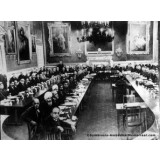
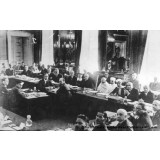
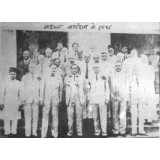
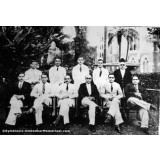
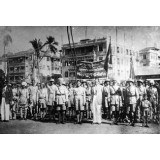
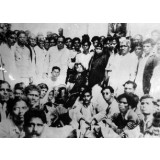
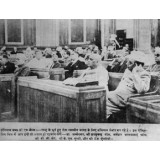
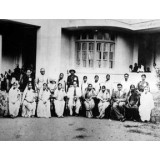
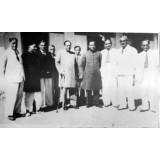
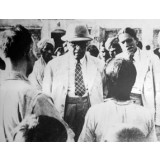

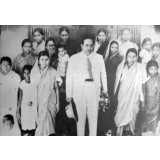
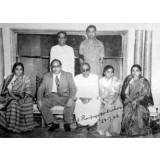
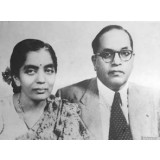
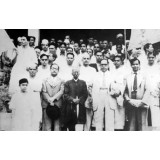
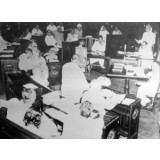

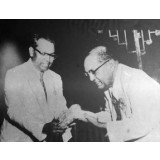
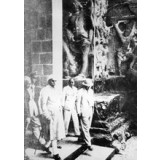
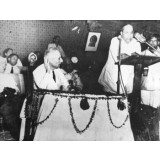
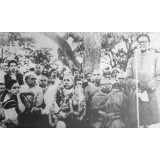
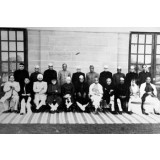
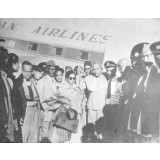
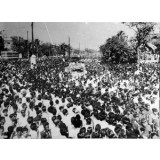
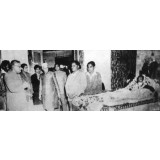

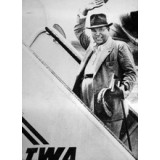
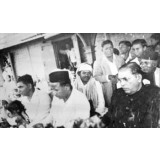
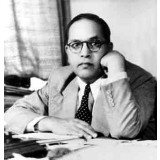
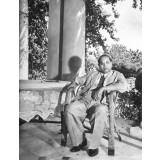
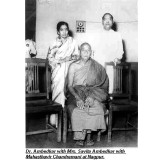
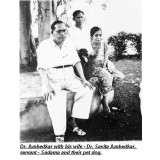
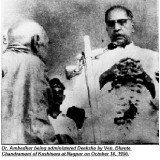
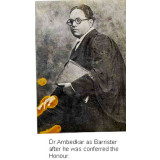
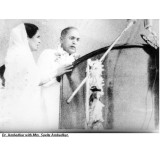
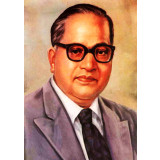
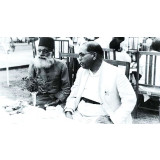
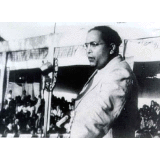
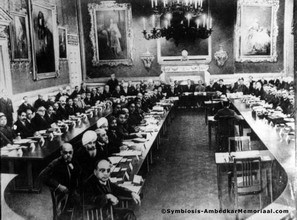



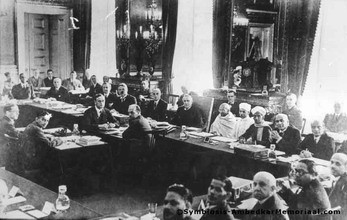
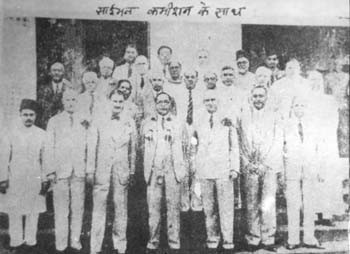
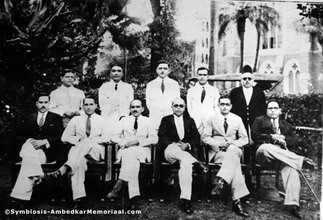
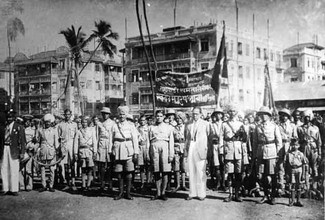
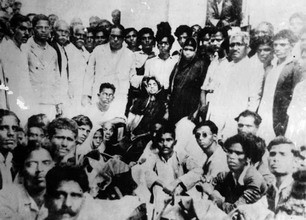
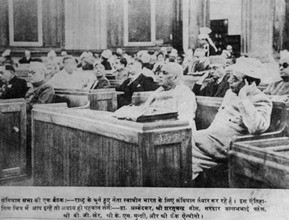
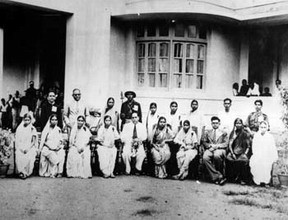
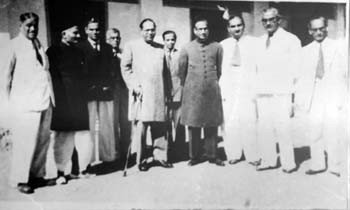
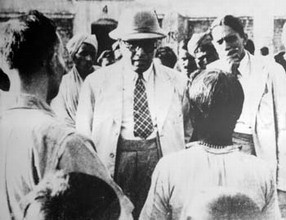
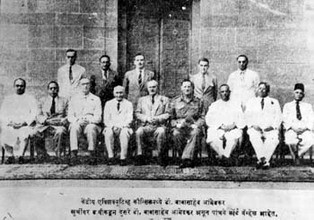
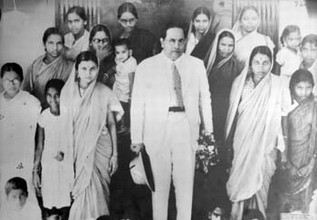
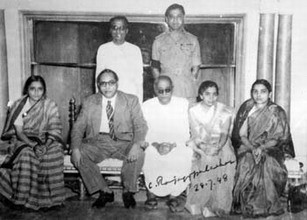
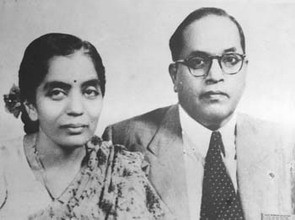
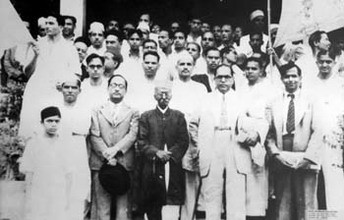
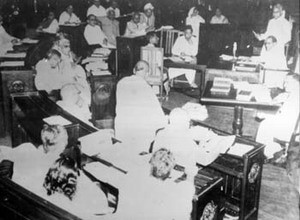
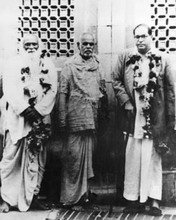
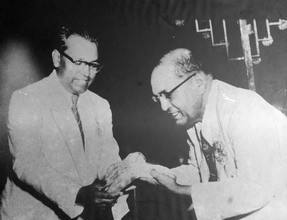
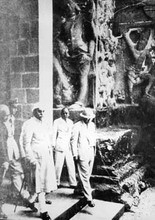
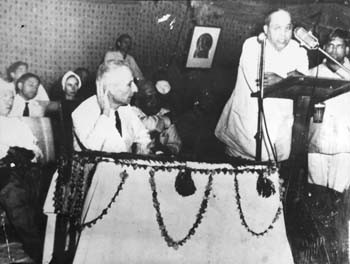
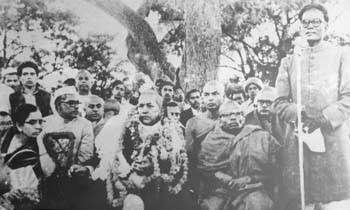

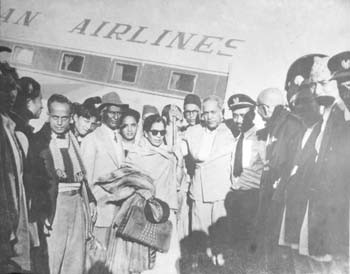
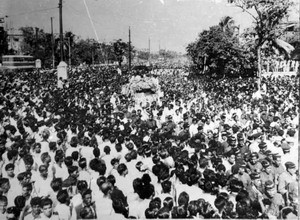
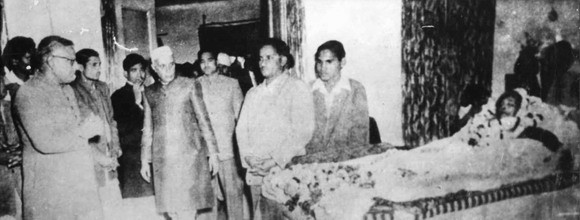
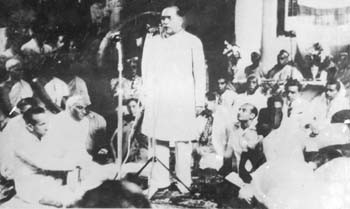
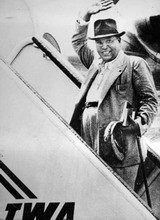
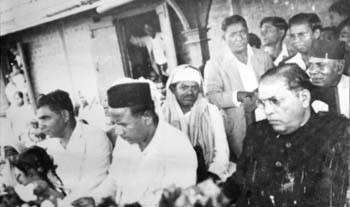
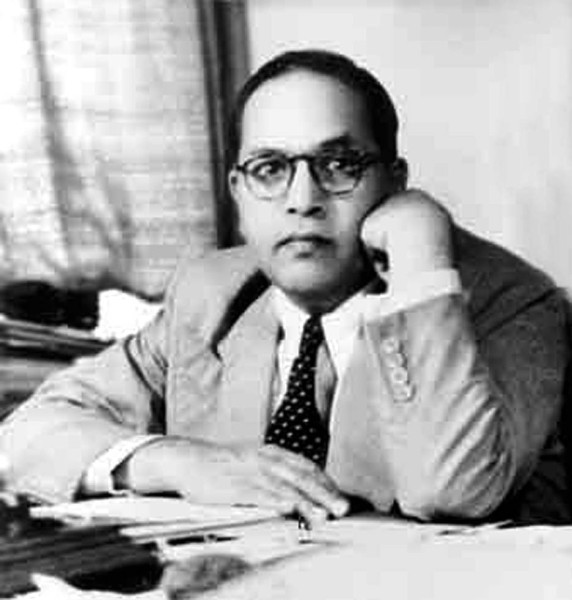
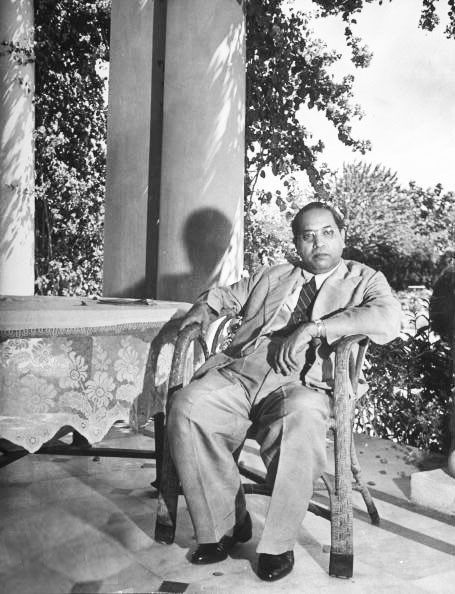
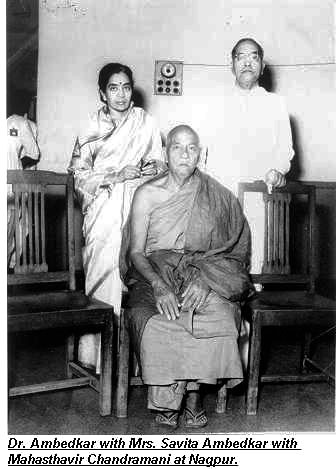
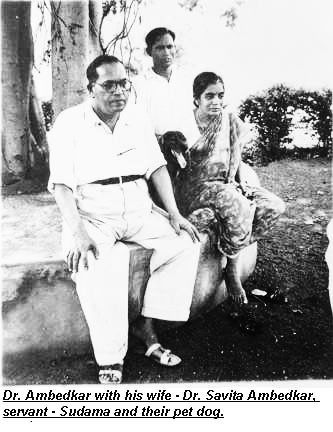
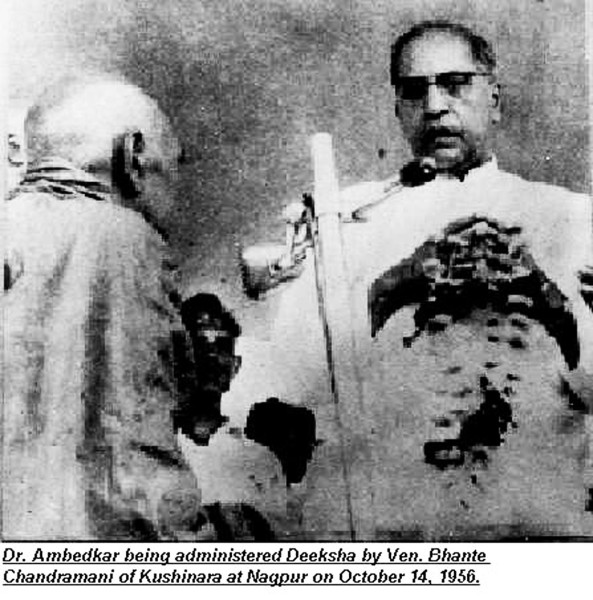
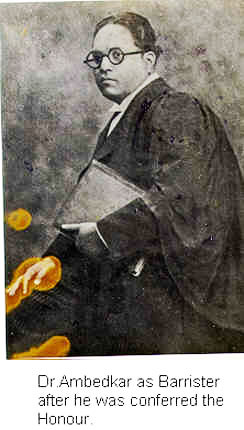
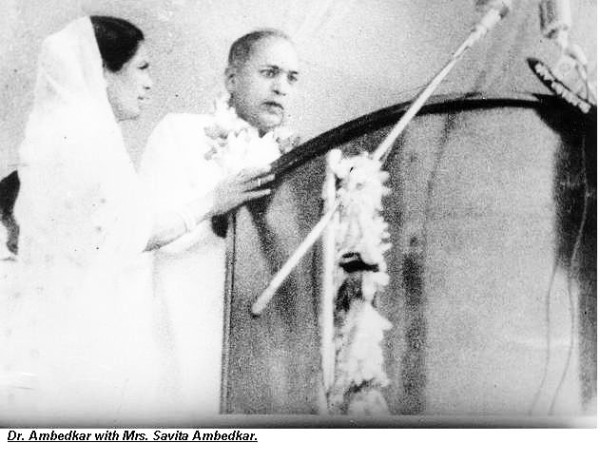
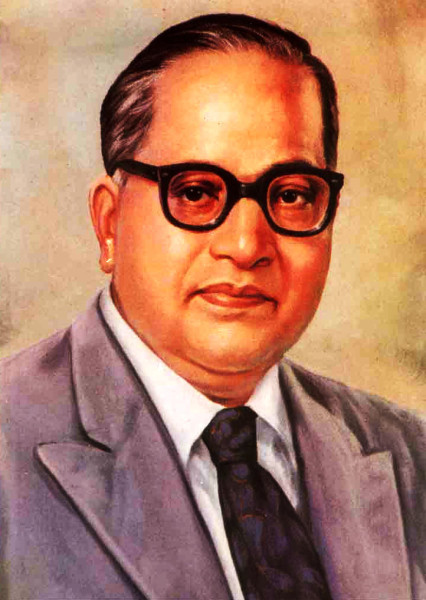
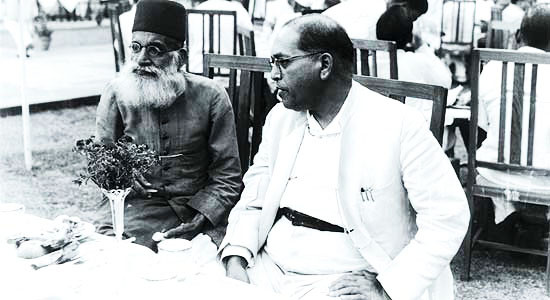
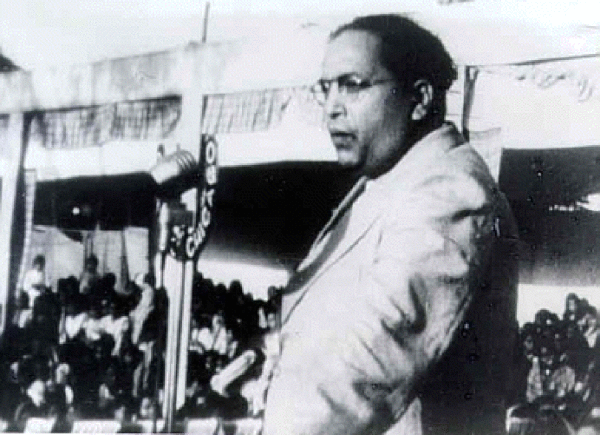

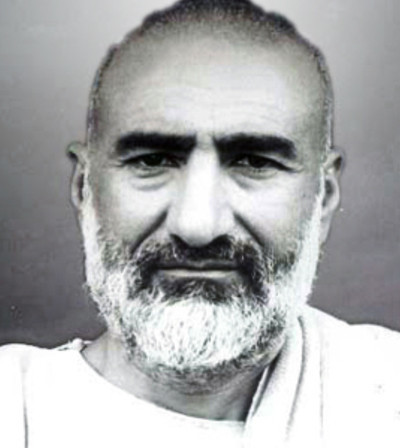
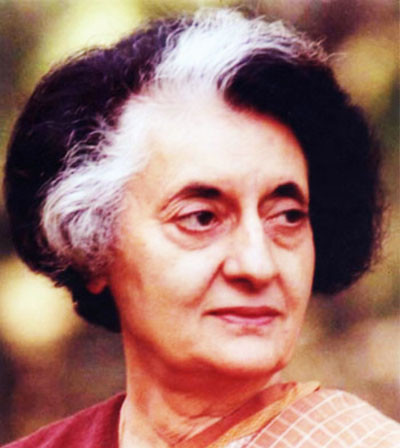
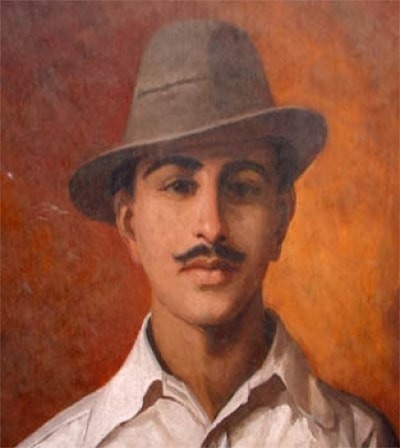
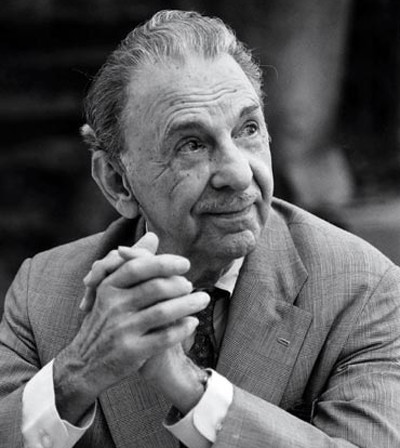
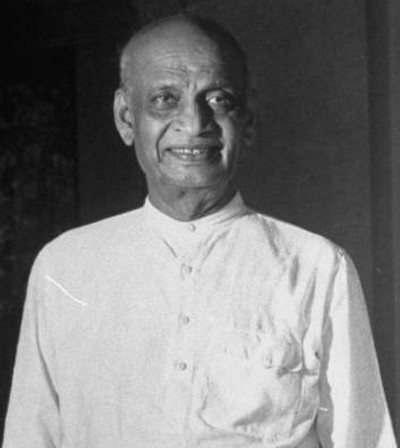
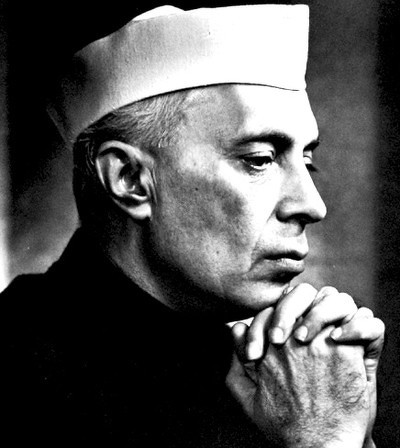
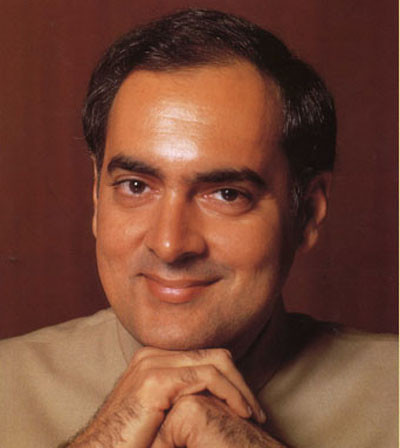
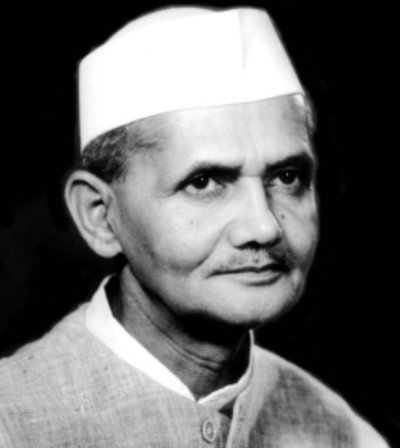
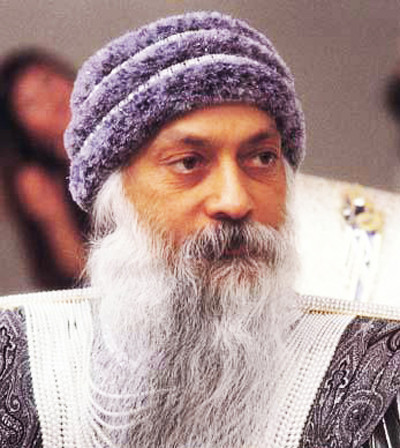

Jaydip
2 years ago
Paresh Maheshewari
4 years ago
B S Parmar
10 years ago